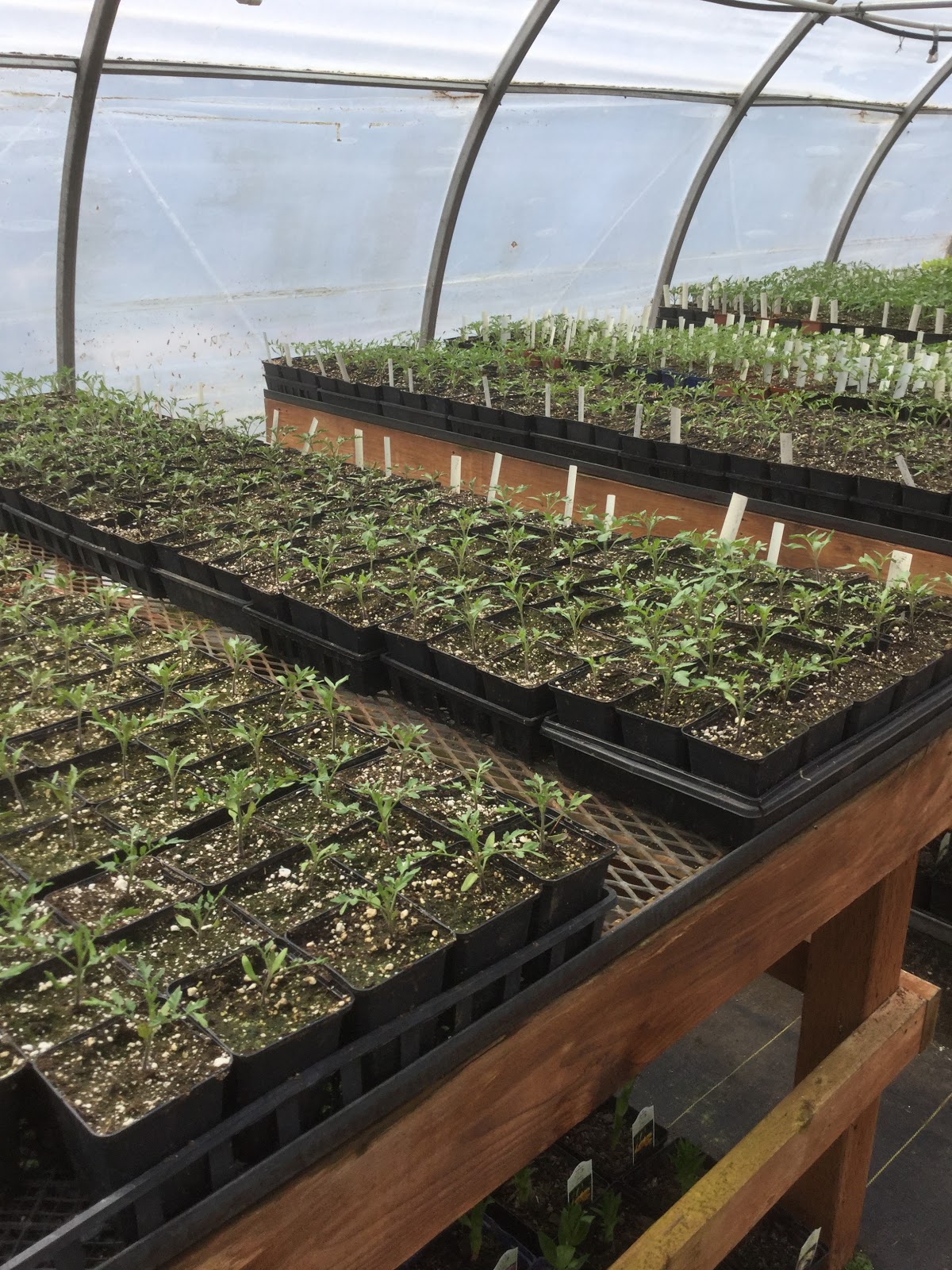Seed Starting Tips
Starting your own seeds indoors is a good way to get ahead of the growing season. You can order from seed companies locally or worldwide. We will all miss attending our local Seedy Saturday conferences in person this year -- they always inspire us to try growing something new! Read the back of each seed packet before sowing your seeds, and have patience if your seed order hasn't arrived in the mail yet. West Coast Seeds says that they are extremely busy and have exceeded their capacity to fulfill orders within the usual time frames. There may also be delays due to Canada Post. We have a great selection of seeds available in our gift shop!
Here are some important things to know before starting your seeds:
Read before you plant! Seed packets contain a wealth of information, including: growing requirements (sun, shade, soil, moisture, heat tolerance); height at maturity; days to harvest; sowing recommendations (indoors, outdoors, warm, cold); germination specifics (planting depth, days to germination); spacing and thinning advice.
Germination temperatures listed on seed packets refer to soil temperatures, NOT air temperatures! Most seeds require between 21-24° C (70-75° F) to germinate. You can provide heat from the bottom using a heating mat, top of the refrigerator, or propagation table. Once seeds have germinated, get them under a grow light or near a bright window. Start seeds warm, grow seedlings cool.
All seedlings need proper light immediately following germination. A south-facing window or grow lights are best to provide 12-14 hours of light each day. Good light is essential for raising stocky, vigorous seedlings. Inadequate light results in tall, spindly seedlings.
Seeds will germinate in a wide variety of containers. Make sure containers are clean and have drainage holes. Seedling flats, cell packs, peat pots and peat pellets work well. If using last year's containers, sterilize them by cleaning with a 10% bleach solution (1 part bleach to 9 parts water) and air dry before using.
A sterilized, soilless seed-starting mixture like Sunshine Mix is ideal for seeding and transplanting. Do not use garden soil; it is too heavy and may contain weed seeds, overwintering insects and disease spores. You can easily make your own mix by combining 1 part perlite or vermiculite and 1 part peat moss. Dampen the mix before seeding.
Germination is all about moisture! In order for plant cells to start multiplying, the dried seed must absorb several times its volume of water, causing the embryo to enlarge and the seed coat to burst open. Some seed trays come with plastic transparent domes that allow light in while keeping the soil moist. Plastic wrap or a plastic bag can also act as a mini greenhouse. Monitor daily to maintain even moisture and check for onset of disease. If mold or fungus grows due to excessive moisture, remove the plastic cover and let your seedlings breathe.
For a visual reference, check out this video we posted on Facebook in 2019.
Good luck!
Linda

